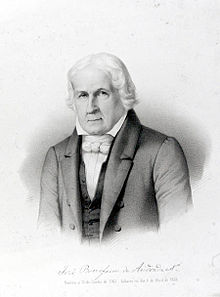|
Freemasonry in Brazil
The presence of Freemasonry in Brazil is mentioned in several documents from 1797 onwards. Banned several times throughout its history, Freemasonry experienced rapid growth in the country between these bans and spread to Paraguay and Uruguay. The first obedience to be created was the Grande Oriente do Brasil in 1822, by three French lodges. Strongly opposed by the Catholic clergy, it united in 1883 after a long period of division until 1927. Brazilian Freemasonry is the largest in South America in terms of membership. In 2017, all the obedient currents were present on its territory. History Claimed to have existed since 1797 with the creation of a Masonic lodge at the end of the 18th century, Brazilian Freemasonry is recognized as a Masonic power of major importance in South America.[1] However, in 2017, some historians differ on the veracity of this existence before the beginning of the 19th century,[1] while others place the first documented creations around 1801.[2] However, it was banned for the first time between 1806 and 1819 by the viceroy, Count dos Arcos. When Peter I of Brazil was proclaimed emperor in 1822, three French lodges founded the Grand Orient of Brazil. José Bonifácio de Andrada e Silva, Patriarch of Independence, was Grand Master for a time. He gave way to the emperor, who again banned Freemasonry for fear of their political activities. After his abdication and from 1831 onwards, lodge activity resumed.[1] At this time, Brazilian Freemasonry took on a highly political character, becoming involved in sedition movements aimed at Brazilian independence.[3] From then on, the Grand Orient of Brazil was reconstituted and began to expand significantly, extending its influence as far as Uruguay and Paraguay. However, the situation of Freemasonry remained unstable, with many divisions, until 1883, when a majority of lodges rallied to obedience in the face of the hostility of a Catholic clergy very active in anti-Masonry. This alliance lasted until 1927. A schism between high-grade jurisdictions and symbolic lodges led to the creation of 22 Grand Lodges, whose sovereignties were based on the borders of Brazil's constituent states. The 22 Grand Lodges were recognized by the vast majority of American and Canadian obedience. At the same time, the Grand Orient of Brazil, the historic obedience, retained the recognition of English, Scottish, and Irish Grand Lodges, most notably that of the United Grand Lodge of England, which granted it exclusive recognition in 1935.[4] See alsoReferences
Bibliography
|
Portal di Ensiklopedia Dunia